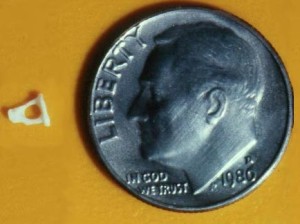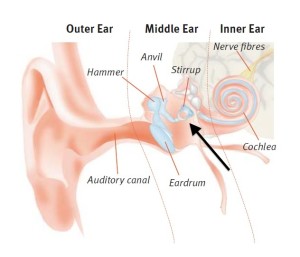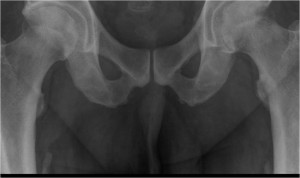Did you know? There are two bones in the human body that have us riders in mind:
 One is the smallest human bone, at just a few millimeters. It’s the stirrup, one of three bones in the middle ear. That’s the air-filled space between the outer ear and the ear canal. Sound makes the stirrup vibrate. Those vibrations are transferred to the cochlea of the inner ear. Sensitive hairs there trigger the generation of nerve signals which are then sent to the brain.
One is the smallest human bone, at just a few millimeters. It’s the stirrup, one of three bones in the middle ear. That’s the air-filled space between the outer ear and the ear canal. Sound makes the stirrup vibrate. Those vibrations are transferred to the cochlea of the inner ear. Sensitive hairs there trigger the generation of nerve signals which are then sent to the brain.
The other bone is actually not a bone at all.
The Rider’s Bone or Calvary Bone is an ossification of the tendon of the long adductor of the thigh muscle, according to Dr. Todd Grey of Utah’s Office of the Medical Examiner. Long-time horse riders will unwittingly enable this tendon – which runs from the bottom of the pelvis to the top of the  femur – to calcify over many years.
femur – to calcify over many years.
Professor Mark Nielsen, of the University of Utah, explained: “Tendons are made of collagen, important biological fibers that act a bit like a good climbing rope. They are dense, connective tissues all organized in one direction,” he said. But tendons may get weak when they experience a bending force or compressive load. “The cells respond by depositing crystals to give it strength and a better ability to resist this (unusual) compressive load.”
Those crystals result in an irregular calcification and a hard, lumpy appearance. Thus, the Rider’s Bone, a bone in name only.
